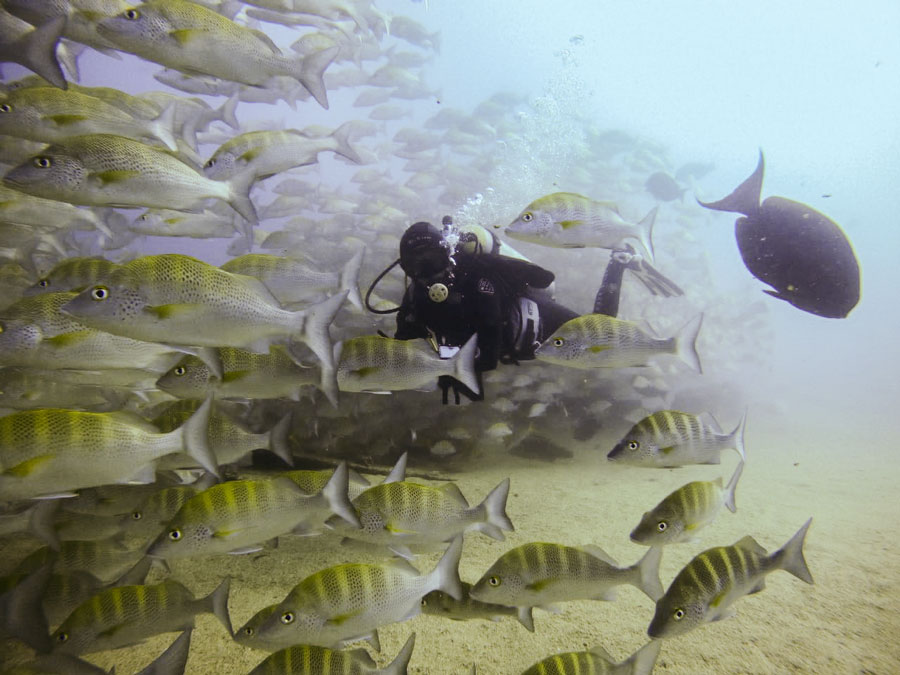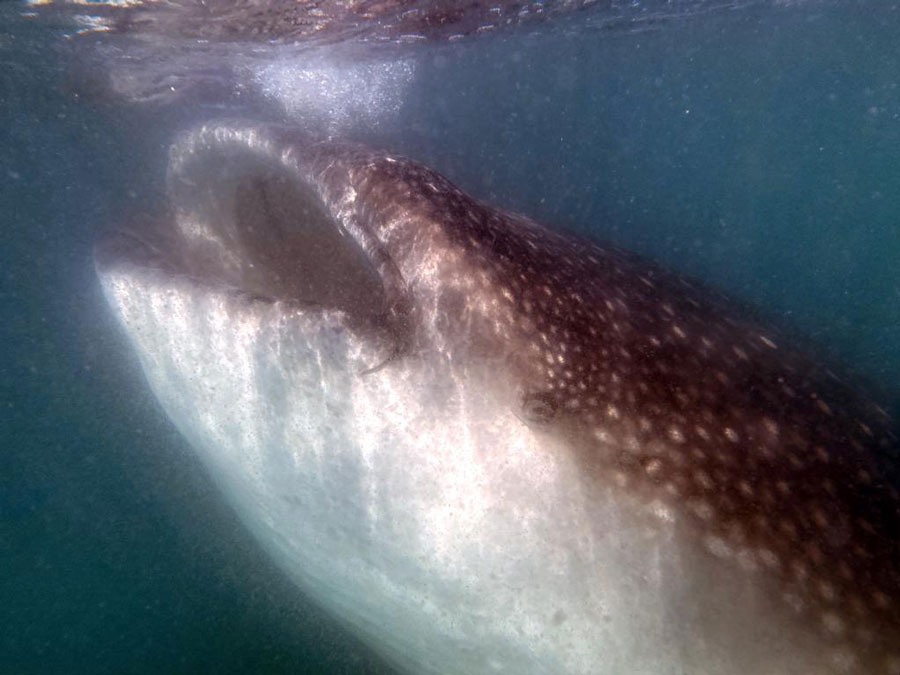Lessons learned from assisting a Tec 40 course in La Paz at The Dive Gurus:
- Practice, practice, practice: If you don’t regularly tech dive, getting a refresher before jumping back in is wildly helpful
- Learn how to pee on boats without a head
- Hydrate properly so you stay safe and avoid DCS
Watch the video above for full context.
Otherwise, let’s get into details for the technical courses with PADI.
PADI tec diving course requirements
In order to do the entry level course, Tec40, you need to have your Advanced Open Water, Nitrox, and Deep certifications. To continue past Tec40, you’ll also need your Rescue certification.
What equipment do you need for technical diving?
You can see in the video that the students are using backmount doubles for their course. For any technical course, you will need a way to multiple tanks on the dive with you. I asked Tec Instructor and PADI Course Director Luke Inman why he prefers teaching this course in doubles. He says, backmount is an easier transition for divers just starting out in technical diving, and it’s more comfortable on the boat in rough seas or strong currents.
Backmount vs sidemount for technical diving
People often ask my opinion on choosing backmount or sidemount for technical diving. The reality is they’re both great tools, but you have to consider the conditions and your needs as a diver.
I have never gone with backmount doubles, but I recommend choosing this configuration if you’re shore diving in a place with waves or boat diving with a strong current. Keep in mind, some boats don’t like divers to be in sidemount even if there isn’t a strong current, so check with your local boat operators to learn about policies in your hometown. Also, if you wish to continue your tech diving training beyond carrying 2 stage bottles (4 tanks in total), I think backmount is a smarter option because it moves your bottom gas to your back, giving more room for stage deco bottles at your sides.
I think tech sidemount is great if you have back, hip, or knee issues. Sidemount allows you to move tanks separately and not hold anything on your back while diving. Also, it’s a dream to dive sidemount in places like lakes, cenotes, and protected areas of the ocean (like the Puget Sound in Washington state). In these locations, you can stage your tanks in the water before donning all your gear. I also really like sidemount because I can see everything going on with my tanks instead of relying on my buddy to diagnose my gear problems.
Regardless of the configuration you choose, during the course, you will learn how to plan decompression dives, problem solve, and safely switch gases for deco stops, all while improving your general diving skills like finning and buoyancy.
What to expect from your Tec 40 course
Your instructor will challenge you with scenarios and simulated equipment failures to improve your response time, teamwork skills, and stress management. Safety is a big focus for the course so you will be practicing out of air and shut down drills over and over until they become second nature. The course ends with a graduation dive where you show off everything you learned and enjoy a proper deco dive.
Putting technical diving skills to the test
We did the final immersion at the famous dive site, Los Islotes in the Espiritu Santo National Park, home to the friendliest colony of sea lions in the world. Recreational divers explore the shallow reef, playing with the sea lions, but we got to experience a long dive, swimming around the island while exploring the gorgeous deep, rocky reef.
I could’ve spent HOURS playing in this dive site. There were tons of fish, dive-bombing sea lions, and the guys even got to hang out with a few curious mobula rays. I was distracted by the colorful fans, so I missed this interaction, but that’s one of the coolest things about technical diving. You get to dive in places less visited by people where animals may be more open to spending time with you. Deeper reefs are also less impacted by tourism, so you can witness and appreciate more pristine pieces of nature.
Tec diving barriers
I can count on my hands the amount of technical dives I’ve done since taking my Tec courses. I never had time for dives like that when I owned the dive shop in Indonesia, and since then, the barrier has been more financial. I had no room in my budget for extra gear or special gases. For a while, just filling my tanks with normal air was a struggle financially, so using nitrox or renting extra tanks with 50 or 100% oxygen was out of the question. My experience is on the extreme side of things, but I hear similar concerns keeping divers from getting into tec, so I want to share one thing. Obviously, there is more cost to getting into technical diving, but doing dives like this one isn’t the huge financial burden many of us perceive it to be. Yes, you need the basic tec training and equipment to take two tanks on a dive. Yes, you’ll need to rent or fill a tank with your deco gas, but oxygen isn’t nearly as expensive as helium, so it may actually fit in your budget to explore.
It’s completely worth the time, effort & money.
Join me on upcoming Azul Unlimited dive expeditions
See what trips are coming up. I always give my community first dibs on spots, so you can sign up for Patreon (and get trip discounts) or my email list to be the first to know about new expeditions in the future.










